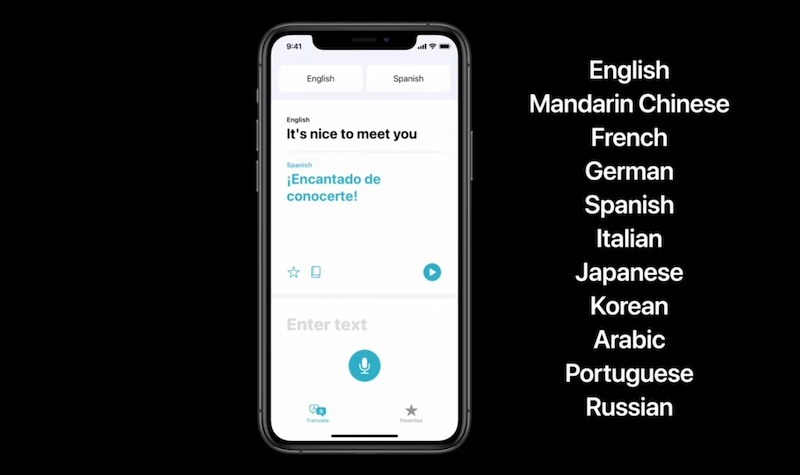Apple Translate runs on (surprise!) “neural” models and, more interestingly, works offline.

By:
Eric De Grasse
Chief Technology Officer
26 June 2020 (Paris, France) – Okay, there’s now another consumer-oriented translation app. Featuring fewer than a dozen languages. Big deal. Well, sort of, actually. Apple Translate comes pre-installed on the new iOS 14 release scheduled for mid-September, as announced this week at Apple’ giant Worldwide Developers Conference. And while there are over two million apps on the App Store, only about 40 Apple apps come pre-installed. So Translate is joining an exclusive club that includes the likes of Calculator, Mail, Passbook, and everyone’s favorite, Stocks. And we’ll see if Translate even makes it into the inner sanctum of apps that can’t be deleted.
Thousands of contract attorneys and contract translators use mobile translation apps during e-discovery reviews (though few will admit it) so we thought we’d jump into this a bit.
Apple Translate runs on (surprise!) “neural” models and, more interestingly, works offline. So it will surely wipe out a lot of translation apps on the Apple Store. But we still need assess the quality, which we’ll do this summer as one of the beta testers. But in a nutshell, there are two ways this can go:
(1) Apple decides to put some of its massive engineering muscle behind Translate and continue to add languages and features; or
(2) Translate doesn’t get much attention post-launch and joins Stocks in the folder called “Apple Stuff.” Still, if I were an iOS developer of a paid translation app, I’d be worried.
iOS 14 will feature several updates to Siri, such as enabling it to send audio messages, help with offline translations, and support for new language pairs. Basically, Siri will enable iPhone users to have “entire conversations natural and easy, and have the ability to stay private” via offline mode. And while the app is geared for the personal use market … the app is intended for use with speech or short written sentences, not to translate whole web pages or documents … Apple indicated “our expansion plans envision commercial use”.
We have been covering developments in machine translation for quite some time and reports on Machine Translation (MT) out of Cupertino have increased in recent years, adding to the scads of research undertaken by behemoths Google and Amazon. Later this summer we hope to have a longer piece on how all of this advanced MT has spilled over into the e-discovery market. The days of hiring “human talent” through staffing agencies is dwindling as corporations and law firms see an expanding “ease of use” coupled with increasing accuracy.
As I noted in a special brief to our clients, it was last fall when leaked documents suggested that Apple had stepped up research into MT. More recently, two Apple researchers – one of them a Siri Machine Translation R&D Scientist – went on a quest toward overcoming speech translation, which builds on previous work in MT and automatic speech recognition (ASR).
The iPhone Translate app is a natural competitor to Google’s and the host of standalone translation gadgets out in the market today, especially since Apple’s Translate app has the ability to work completely offline. This could potentially address latency issues, the one perennial complaint surrounding standalone translation devices (i.e., the lag between voice input and audio output when online). It also explains the surge of legal translation work going to companies like REV and Valossa.
As shown in the Apple demo, turning the iPhone to landscape mode opens up a side-by-side view of the conversation, making it easier to follow. Using a single microphone, the Translate app detects the spoken language and shows the translation on the “correct side of the screen using advanced on-device machine learning and the powerful neural engine.” And what I really liked was interface is simple, with a language selector, text field and record button as well as a few extra widgets like favorites and a dictionary.
iPhone users will be able to translate text and voice between any combination of 11 languages (English, Mandarin Chinese, French, German, Spanish, Italian, Japanese, Korean, Arabic, Portuguese, Russian) but Apple announced that list will greatly expand with future releases of the app.
More to come.